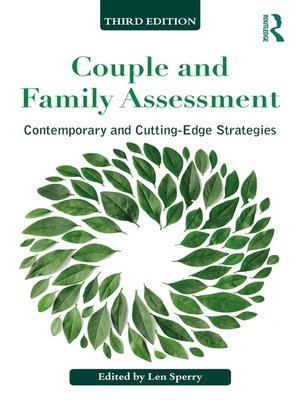Couple and Family Assessment
ebook ∣ Contemporary and Cutting‐Edge Strategies · Routledge Series on Family Therapy and Counseling
By Len Sperry

Sign up to save your library
With an OverDrive account, you can save your favorite libraries for at-a-glance information about availability. Find out more about OverDrive accounts.
Find this title in Libby, the library reading app by OverDrive.



Search for a digital library with this title
Title found at these libraries:
| Loading... |
The field of family, child, and couple assessment continues to evolve and change since the first edition of this book appeared in 2004. Couple and Family Assessment, Third Edition, is a thoroughly revised and updated resource for anyone working with children, adolescents, couples, and families. It provides an in-depth description of an even larger number of clinically useful assessment tools and methods, including issue-specific tools, self-report inventories, standardized inventories, qualitative measures, and observational methods.
Each chapter provides strategies for systematically utilizing these various assessment methods and measures with a wide range of family dynamics that influence couples and families. These include couples conflict, divorce, separation, mediation, premarital decisions, parenting conflicts, child abuse, family violence, custody evaluation, and child and adolescent conditions, i.e., depression, anxiety, conduct disorder, bipolar disorder, obsessive compulsive disorder, autism, Asperger's syndrome, and learning disorders that can significantly influence family dynamics.
This third edition features the latest, most common and important assessment tools and strategies for addressing problematic clinical issues related to working with families, couples, and children. Chapters 3 through 11 include matrices that summarize pertinent information on all instruments reviewed, allowing readers to instantly compare more than 130 assessment devices. Finally, the book provides extensive clinical case material that illustrates the use of these various assessment tools and strategies in a wide array of clinical situations.
Couple and Family Assessment, Third Edition, will be useful to both trainees and practitioners as a ready reference on assessment measures and strategies for working with families, couples, and children.






